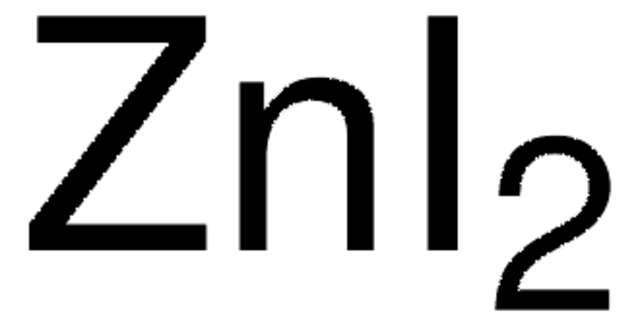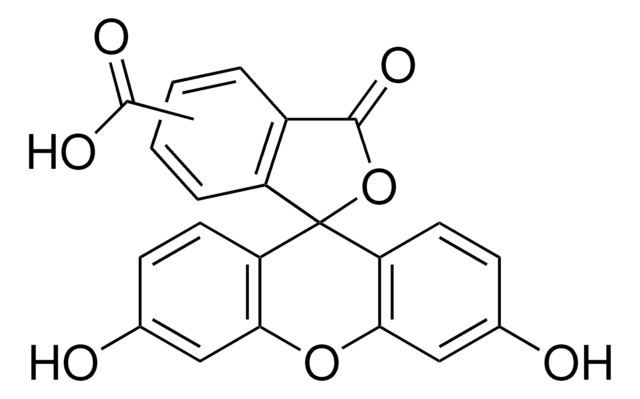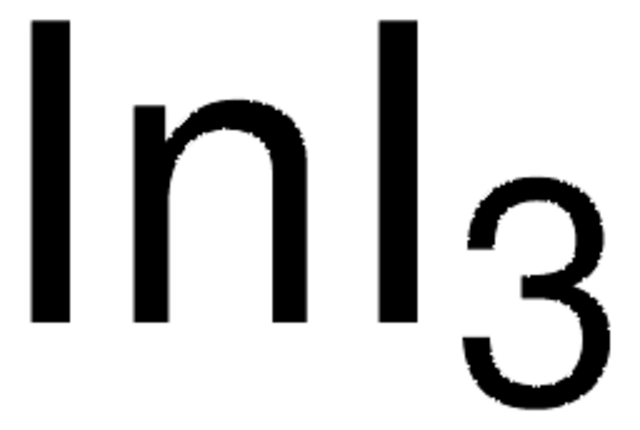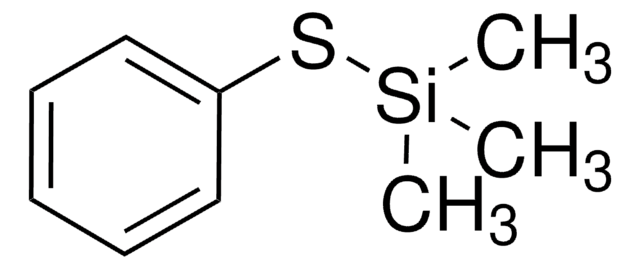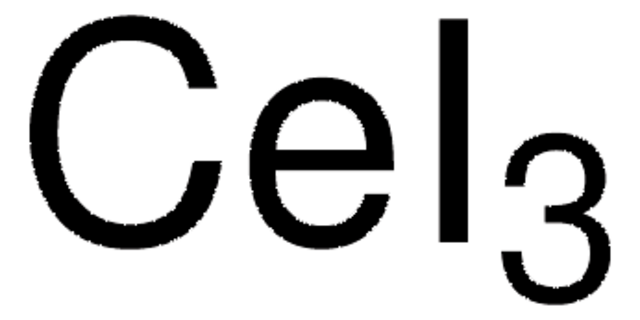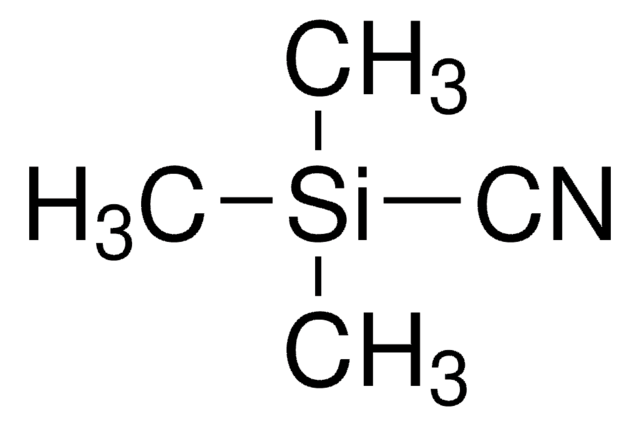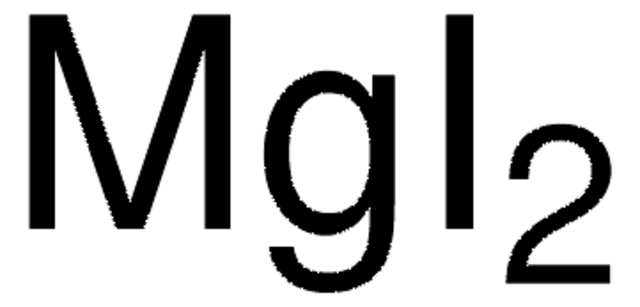466360
Zinc iodide
anhydrous, powder, 99.999% trace metals basis
Sinónimos:
Diiodozinc, Zinc diiodide
About This Item
Productos recomendados
grado
anhydrous
Nivel de calidad
Ensayo
99.999% trace metals basis
Formulario
powder
idoneidad de la reacción
reagent type: catalyst
core: zinc
impurezas
≤15.0 ppm Trace Metal Analysis
mp
445 °C (lit.)
densidad
4.74 g/mL at 25 °C (lit.)
cadena SMILES
I[Zn]I
InChI
1S/2HI.Zn/h2*1H;/q;;+2/p-2
Clave InChI
UAYWVJHJZHQCIE-UHFFFAOYSA-L
¿Está buscando productos similares? Visita Guía de comparación de productos
Para utilizar con
Palabra de señalización
Warning
Frases de peligro
Consejos de prudencia
Clasificaciones de peligro
Aquatic Acute 1 - Aquatic Chronic 1 - Eye Irrit. 2 - Skin Irrit. 2 - STOT RE 2 Oral
Órganos de actuación
Thyroid
Código de clase de almacenamiento
13 - Non Combustible Solids
Clase de riesgo para el agua (WGK)
WGK 3
Punto de inflamabilidad (°F)
Not applicable
Punto de inflamabilidad (°C)
Not applicable
Equipo de protección personal
Eyeshields, Faceshields, Gloves, type P3 (EN 143) respirator cartridges
Elija entre una de las versiones más recientes:
¿Ya tiene este producto?
Encuentre la documentación para los productos que ha comprado recientemente en la Biblioteca de documentos.
Los clientes también vieron
Nuestro equipo de científicos tiene experiencia en todas las áreas de investigación: Ciencias de la vida, Ciencia de los materiales, Síntesis química, Cromatografía, Analítica y muchas otras.
Póngase en contacto con el Servicio técnico